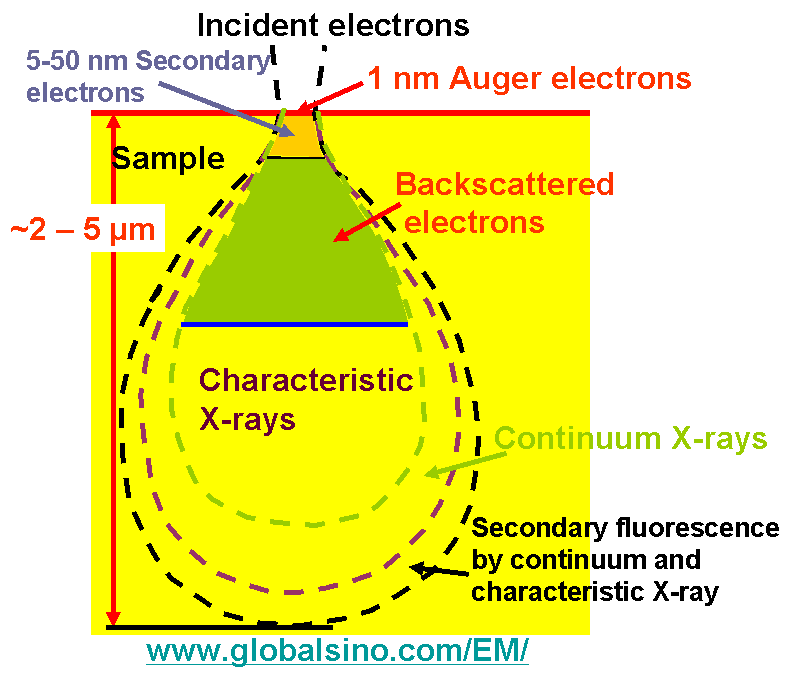|
|
Interaction Volumes for Generation of Auger Electrons
- Practical Electron Microscopy and Database -
- An Online Book -
|
|
https://www.globalsino.com/EM/
|
|
This book (Practical Electron Microscopy and Database) is a reference for TEM and SEM students, operators, engineers, technicians, managers, and researchers.
|
=================================================================================
 |
| Figure 4600. The interaction volumes for generations of secondary electrons, Auger electrons, backscattered electrons, characteristic X-rays, continuum X-rays, and secondary fluorescence (X-rays). |
The volume, inside the specimen in which interactions occur while being struck with accelerating electrons, is called interaction volume. This volume depends on several factors such as atomic number of the materials of the specimen, accelerating voltage of the electron beam, and angle of the incident electron beam, because the materials with higher atomic number absorb or stop more electrons (having a smaller interaction volume), higher voltages penetrate farther into the sample and generate larger interaction volumes, and the greater the angle (further from normal) the smaller the volume. For comparison, Figure 4600 shows the interaction volumes for generations of secondary electrons, Auger electrons, backscattered electrons, characteristic X-rays, continuum X-rays, and secondary fluorescence (X-rays).
For instance, when an incident electron beam at an accelerating voltage of 20 kV irradiates a copper material, the emission depth of Auger electrons is about 1 nm.
|
=================================================================================
The book author (Dr. Liao) welcomes your comments, suggestions, and corrections, please click here for submission. You can click How to Cite This Book to cite this book. If you let Dr. Liao know once you have cited this book, the brief information of your publication will appear on the “Times Cited” page. This appearance can help advertise your publication.
|
|
